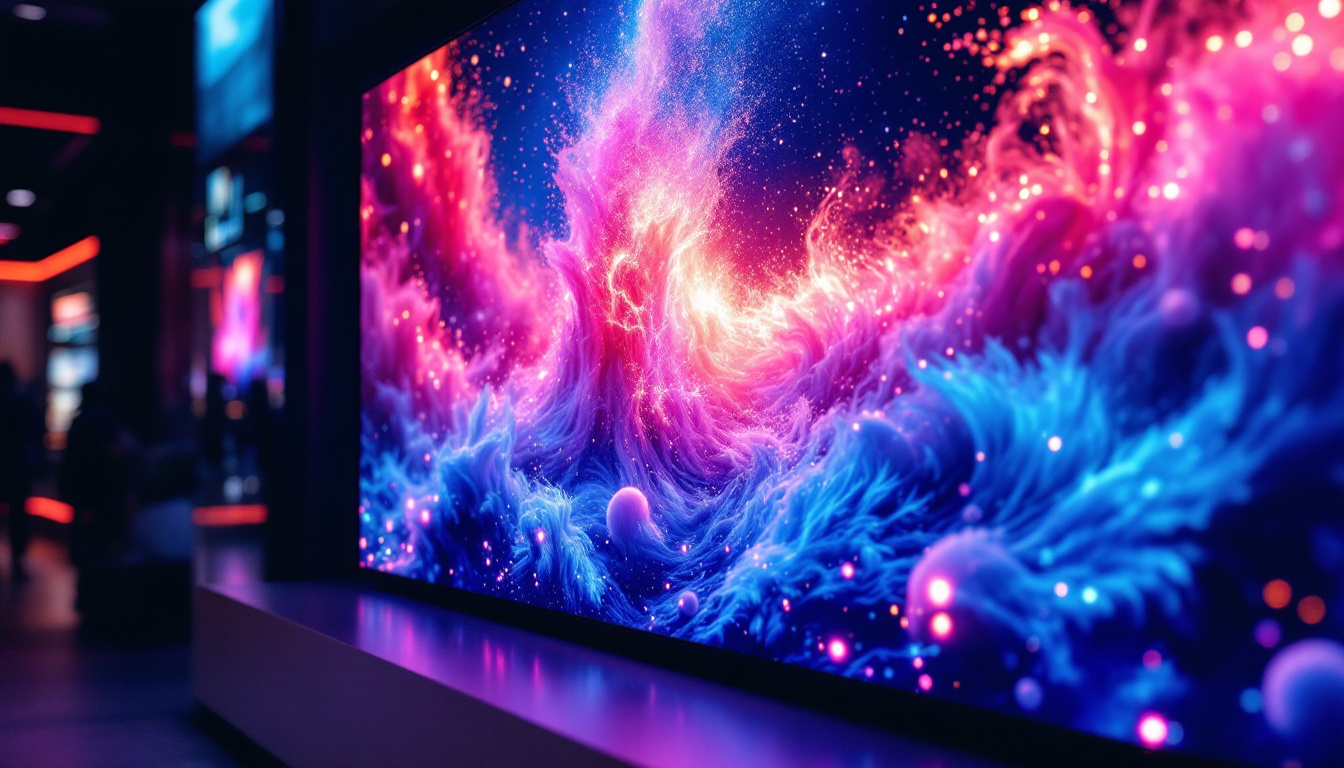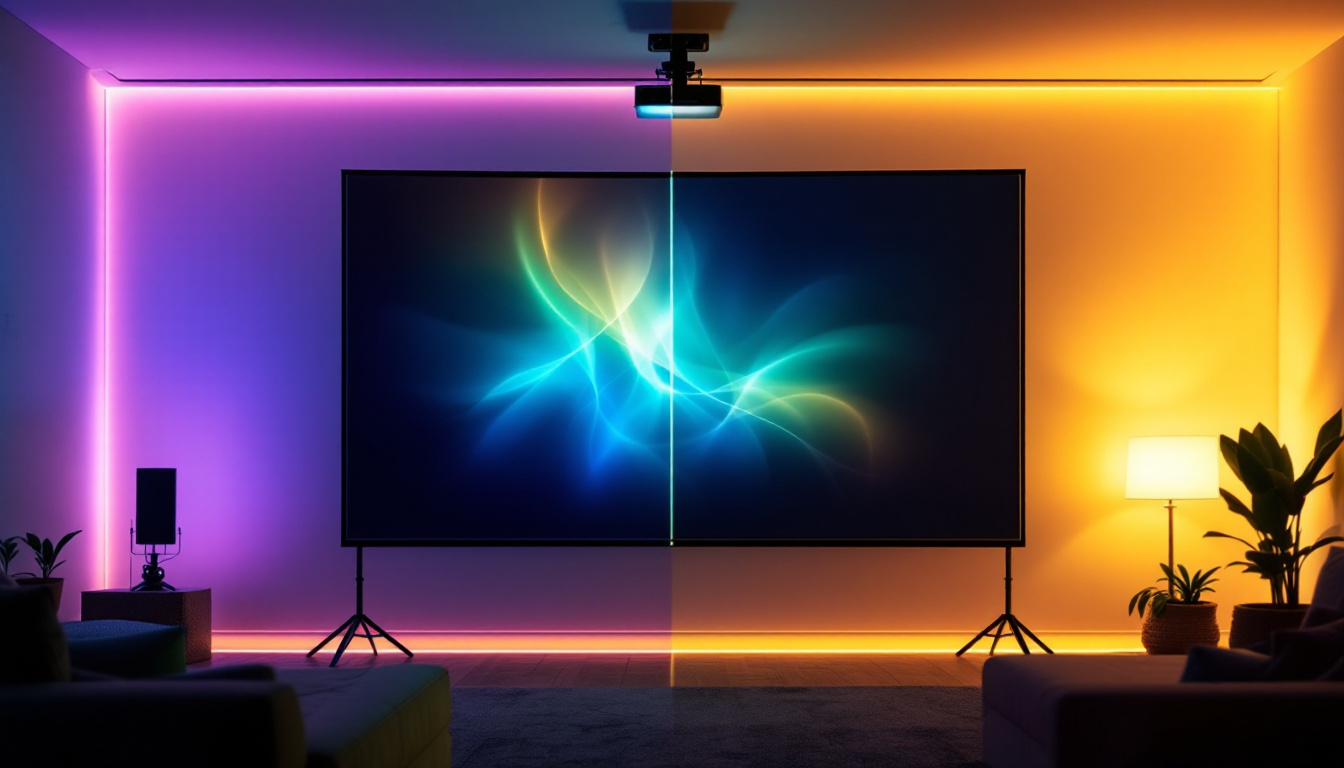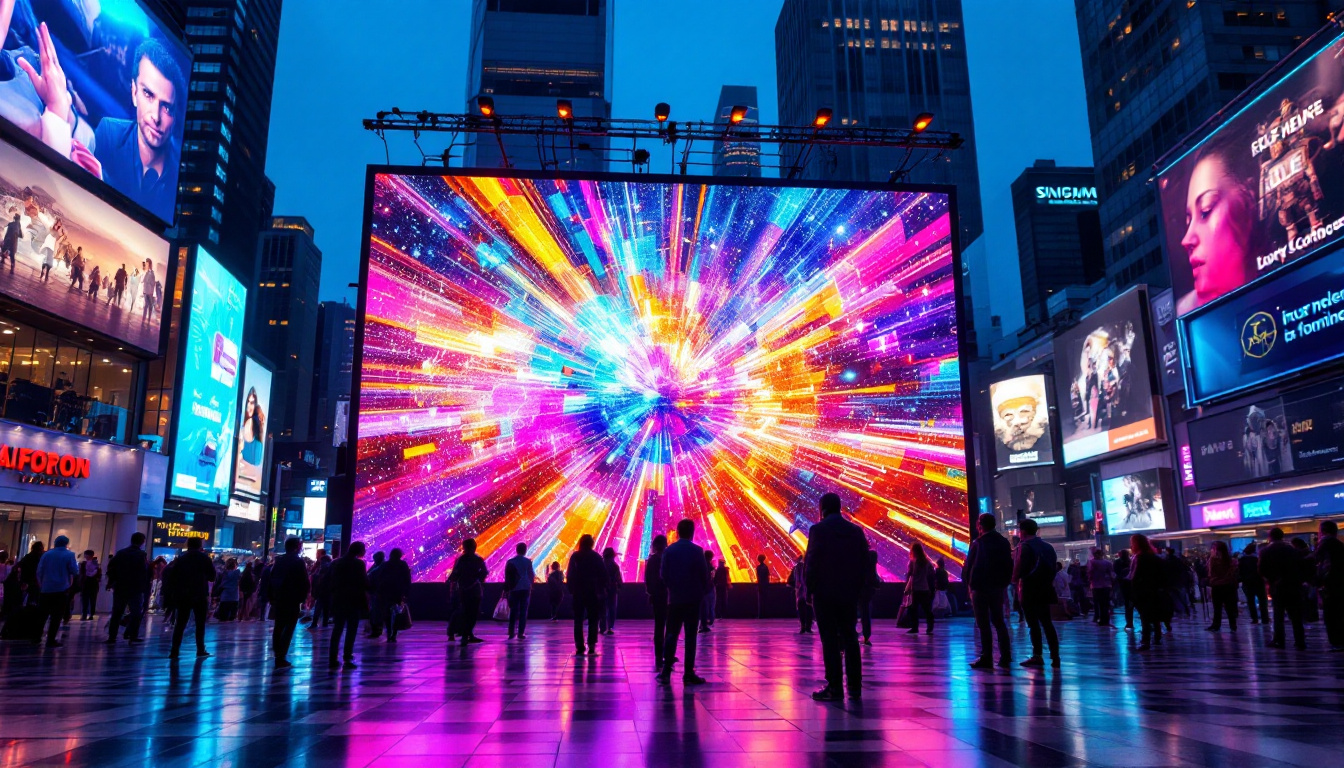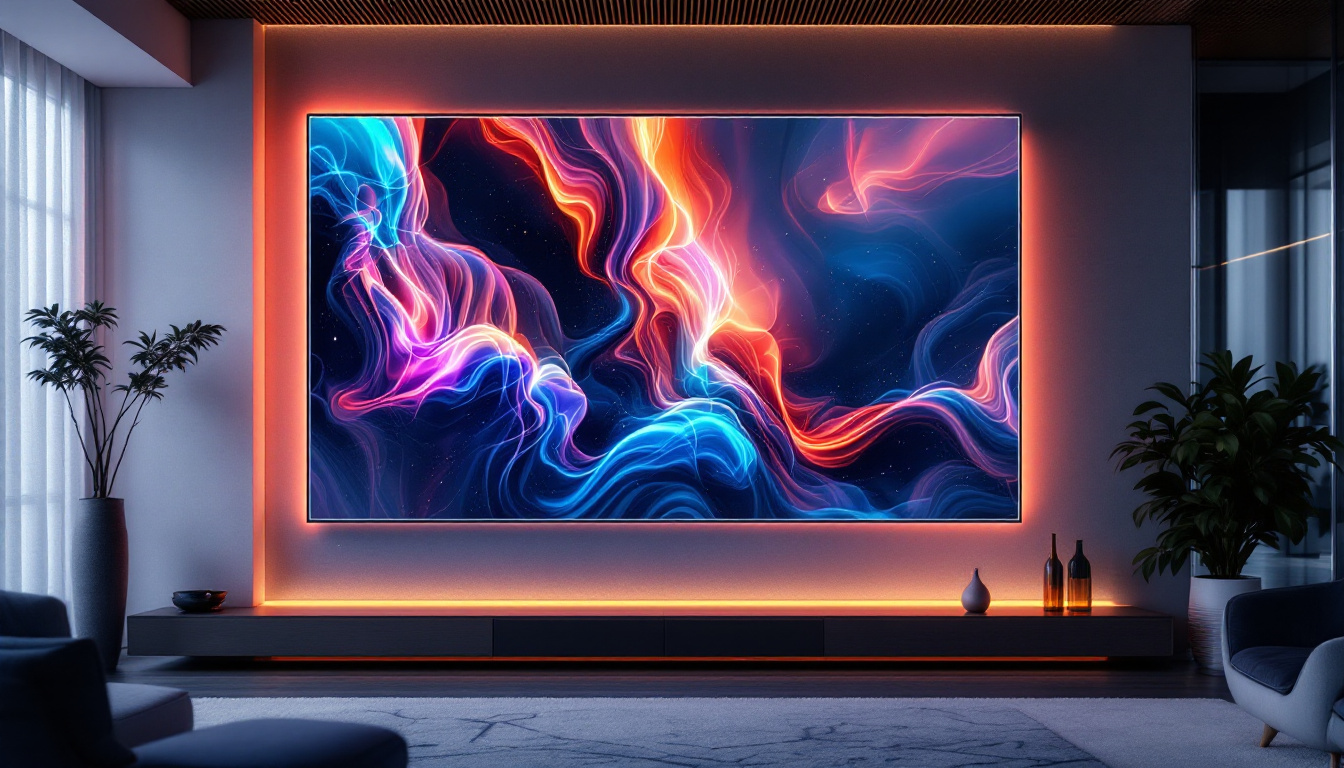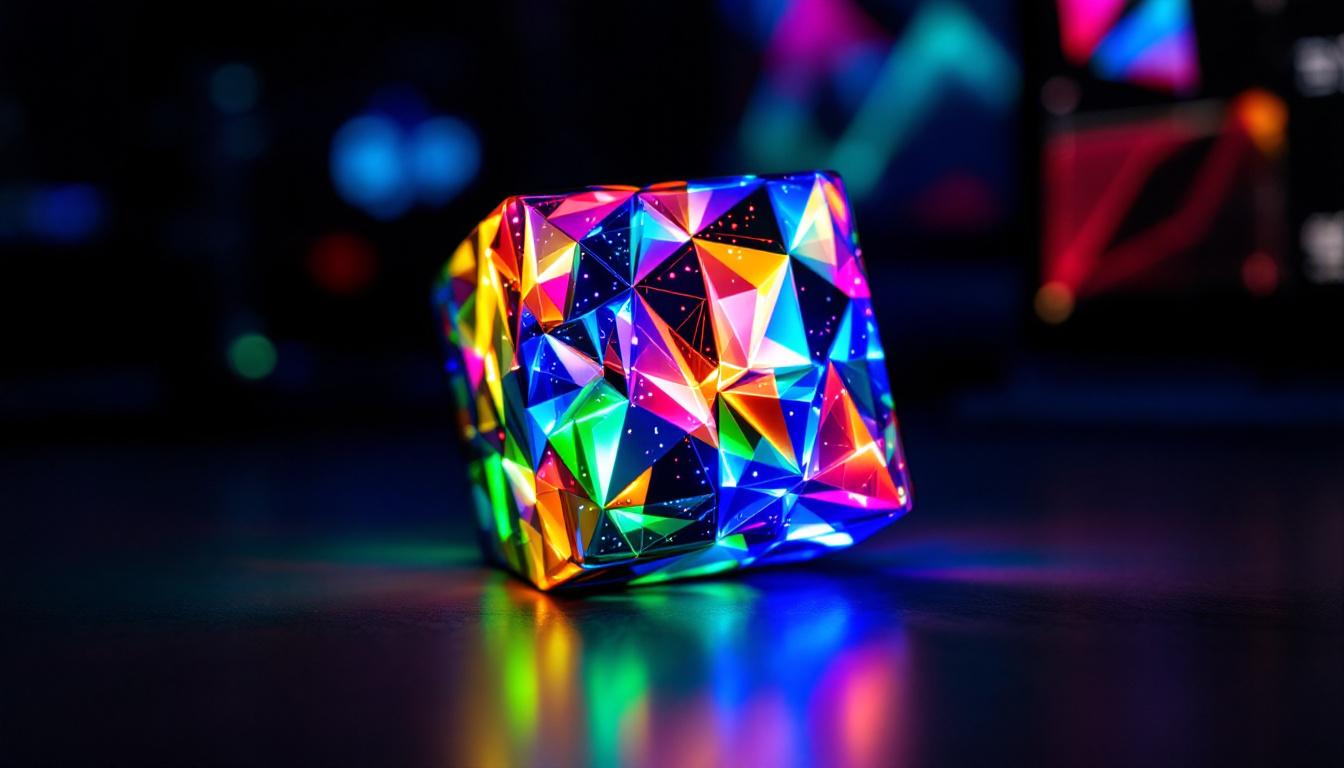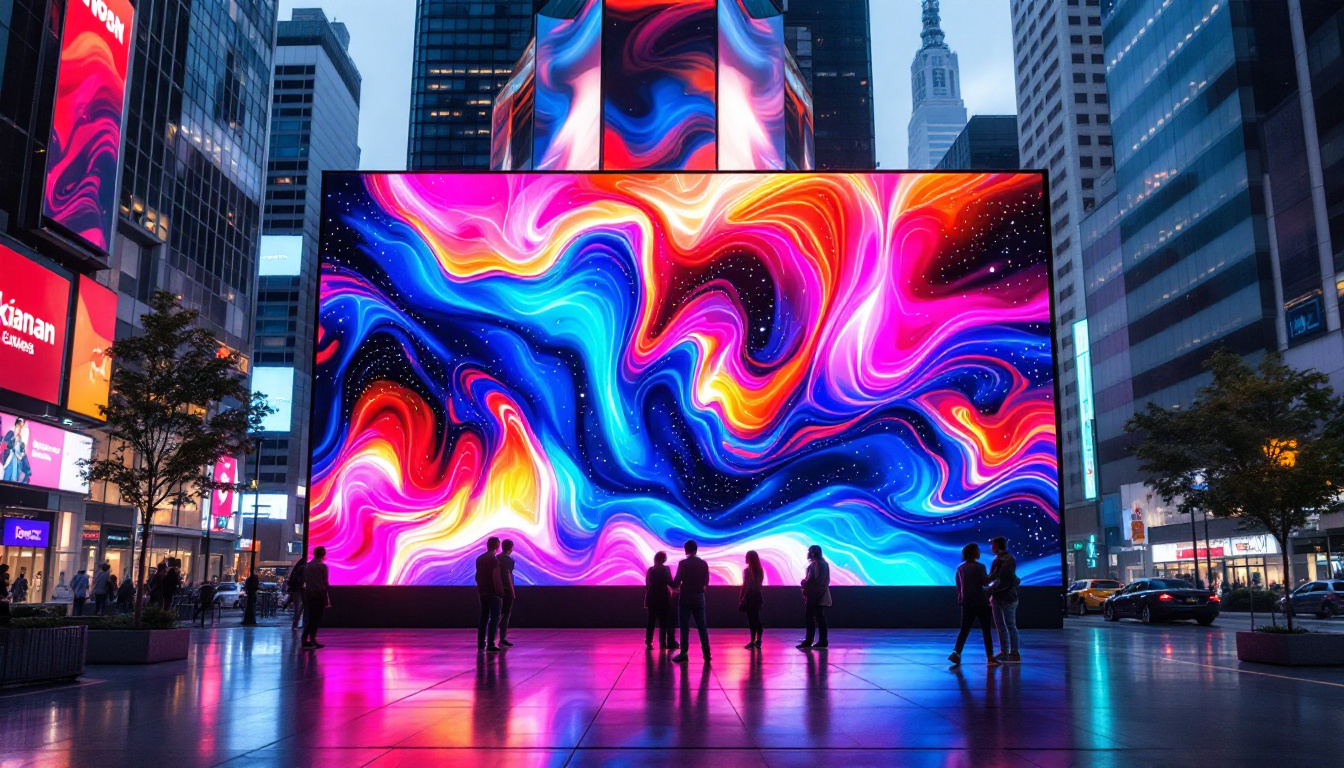In today’s digital age, touchscreen devices have become an integral part of everyday life, from smartphones and tablets to kiosks and interactive displays. At the heart of many of these devices lies LED display technology, which plays a crucial role in delivering vibrant visuals and responsive touch experiences. Understanding how LED displays work in conjunction with touchscreen technology is essential for consumers, developers, and businesses aiming to optimize user interaction and display performance.
What Is LED Display Technology?
LED, or Light Emitting Diode, display technology refers to screens that use tiny light-emitting diodes to produce images. Unlike traditional LCD screens that rely on backlighting, LED displays use these diodes to create light directly, resulting in brighter, more energy-efficient, and higher-contrast visuals. The technology has revolutionized the way we view content, from movies to video games, by providing a more immersive experience.
There are two primary types of LED displays commonly used in consumer electronics: direct LED and OLED (Organic LED). Direct LED displays use an array of LEDs to illuminate the screen, while OLED displays use organic compounds that emit light when an electric current passes through them. Both types offer distinct advantages in terms of color accuracy, brightness, and power consumption. For instance, OLED displays are known for their ability to produce deeper blacks and a wider color gamut, making them a favorite among filmmakers and graphic designers who require precise color representation.
Advantages of LED Displays
LED displays have several benefits that make them ideal for touchscreen devices:
- Brightness and Visibility: LED displays can achieve higher brightness levels compared to traditional LCDs, making them easier to view in various lighting conditions, including direct sunlight.
- Energy Efficiency: LEDs consume less power, which extends battery life in portable devices such as smartphones and tablets.
- Thin and Lightweight: LED technology allows for thinner and lighter screens, contributing to sleek device designs.
- Better Color Accuracy and Contrast: OLED displays, in particular, offer true blacks and vibrant colors, enhancing the visual experience.
Moreover, LED technology has opened doors to innovative applications beyond conventional screens. For instance, large-scale LED displays are now commonplace in stadiums and concert venues, providing stunning visuals that captivate audiences. These displays can also be configured in various shapes and sizes, allowing for creative installations that enhance the overall atmosphere of an event. Additionally, advancements in microLED technology are paving the way for even smaller, more efficient displays that could be used in wearable devices, further pushing the boundaries of what is possible in display technology.
Furthermore, the durability of LED displays makes them suitable for a wide range of environments. Unlike traditional screens that can be fragile, many LED displays are designed to withstand harsh conditions, making them ideal for outdoor advertising and industrial applications. This resilience, combined with their low maintenance requirements, ensures that LED displays remain a cost-effective solution for businesses looking to invest in high-quality visual technology. As the demand for high-definition visuals continues to rise, LED technology is poised to play a pivotal role in shaping the future of display solutions.
How Touchscreen Technology Integrates with LED Displays
Touchscreen technology is the interface that allows users to interact directly with what is displayed on the screen. When combined with LED displays, the result is a seamless, interactive experience that is both visually stunning and highly responsive.
There are several types of touchscreen technologies, but the most common ones used alongside LED displays include capacitive, resistive, and infrared touchscreens. Each has unique characteristics that influence the overall performance and user experience.
Capacitive Touchscreens
Capacitive touchscreens are the most prevalent in modern LED display devices, especially smartphones and tablets. These screens detect touch through the electrical properties of the human body. When a finger touches the screen, it alters the local electrostatic field, which the device registers as input.
This technology offers high sensitivity and supports multi-touch gestures, such as pinch-to-zoom and swipe. Capacitive touchscreens are also durable and allow for high transparency, ensuring the LED display beneath is bright and clear. Additionally, advancements in capacitive technology have led to the development of edge-to-edge screens, which maximize display area and provide a more immersive user experience. This design not only enhances aesthetics but also allows for innovative applications in gaming and augmented reality, where precision and responsiveness are crucial.
Resistive Touchscreens
Resistive touchscreens consist of two flexible layers separated by a small gap. When pressure is applied, the layers make contact, registering the touch. While less sensitive than capacitive screens, resistive touchscreens can be used with any input device, including styluses and gloves.
Although resistive technology is less common in consumer LED devices today, it remains popular in industrial and medical applications where precision input is required. For instance, in environments where users may be wearing gloves or in situations where liquid spills are a concern, resistive screens provide a reliable alternative. Moreover, their cost-effectiveness makes them appealing for budget-conscious projects, particularly in sectors like retail and hospitality, where interactive kiosks are frequently deployed to enhance customer engagement.
Infrared and Optical Touchscreens
Infrared and optical touchscreens use a grid of infrared light beams across the screen surface. When a finger or object interrupts these beams, the device detects the touch location. These systems do not require a conductive or pressure-sensitive surface, which can be advantageous for larger LED displays such as digital signage or kiosks.
These types of touchscreens are particularly beneficial in environments where durability is paramount, as they are less susceptible to wear and tear compared to their capacitive and resistive counterparts. Additionally, infrared touchscreens can support larger screen sizes without compromising touch accuracy, making them ideal for interactive displays in museums, exhibitions, and public information systems. As technology progresses, we are witnessing the emergence of advanced features such as gesture recognition and touchless interaction, which further enhance the user experience and expand the potential applications of infrared and optical touch technologies.
The Role of LED Displays in Enhancing Touchscreen Performance
LED displays contribute significantly to the effectiveness of touchscreen devices beyond just visual output. Their inherent properties improve the overall user experience in several ways.
Improved Responsiveness and Accuracy
High-quality LED displays with fast refresh rates and low latency ensure that touch inputs are registered and reflected on-screen almost instantaneously. This responsiveness is crucial for applications requiring precision, such as gaming, graphic design, and professional software tools.
Moreover, advances in LED display manufacturing have enabled thinner touch sensor layers, reducing the distance between the user’s finger and the display’s pixels. This proximity enhances touch accuracy and reduces parallax errors, where the touch point appears offset from the actual finger position.
Enhanced Visual Feedback
Visual feedback is a key component of effective touch interaction. LED displays provide bright, vivid images that clearly indicate when and where a touch has been registered. For example, buttons can change color or animate upon touch, confirming user input.
OLED displays, with their superior contrast ratios, make these visual cues even more noticeable, which is especially beneficial in low-light environments or for users with visual impairments.
Applications of Touchscreen LED Displays Across Industries
The combination of touchscreen technology and LED displays has revolutionized many sectors by enabling intuitive, interactive interfaces. Here are some notable applications:
Consumer Electronics
Smartphones, tablets, laptops, and wearable devices rely heavily on LED touchscreen displays. The demand for high-resolution, energy-efficient screens continues to drive innovation in this space. For instance, the latest smartphones boast OLED displays with refresh rates exceeding 120 Hz, providing smoother animations and improved touch sensitivity.
Retail and Hospitality
Interactive kiosks, point-of-sale terminals, and digital menu boards utilize LED touchscreen displays to enhance customer engagement. Bright, durable LED screens ensure visibility in various lighting conditions, while touch capabilities simplify navigation and ordering processes.
Healthcare
Medical devices and diagnostic equipment increasingly incorporate touchscreen LED displays for ease of use and precision. The clarity and responsiveness of these screens enable healthcare professionals to interact with complex software efficiently, improving patient care.
Automotive
Modern vehicles feature touchscreen LED displays for infotainment systems, navigation, and climate control. The combination of vibrant displays and responsive touch input enhances driver convenience and safety by minimizing distraction.
Education and Public Spaces
Interactive whiteboards and digital signage in educational institutions and public venues benefit from LED touchscreen technology. These displays support collaborative learning and dynamic information dissemination, adapting to diverse user needs.
Challenges and Future Trends in Touchscreen LED Displays
Despite significant advancements, touchscreen LED displays face ongoing challenges that researchers and manufacturers are actively addressing.
Durability and Screen Damage
Touchscreens are prone to scratches, cracks, and other damage due to frequent use. While Gorilla Glass and similar toughened glass technologies have improved durability, the quest for even stronger, more flexible materials continues.
Power Consumption
Although LED displays are more energy-efficient than older technologies, high-resolution, high-refresh-rate screens can still drain battery life quickly in portable devices. Innovations in power management and adaptive refresh rates aim to mitigate this issue.
Advancements in Flexible and Transparent Displays
Emerging technologies such as foldable OLED screens and transparent LED displays promise to redefine touchscreen interfaces. Flexible displays enable new device form factors, while transparent screens could integrate touch functionality into windows, mirrors, and other surfaces.
Integration with AI and Gesture Recognition
Future touchscreen LED displays are expected to incorporate artificial intelligence and advanced sensors to support gesture recognition, eye tracking, and haptic feedback. These enhancements will create more immersive and intuitive user experiences.
Conclusion
Touchscreen technology combined with LED displays has transformed how people interact with digital devices. The synergy between vibrant, energy-efficient LED screens and responsive touch input systems underpins the usability and appeal of modern electronics across numerous industries.
As technology continues to evolve, innovations in display materials, touch sensitivity, and integration with emerging technologies will further enhance the capabilities and applications of touchscreen LED displays. Understanding the fundamentals of this technology equips users, developers, and businesses to make informed decisions and leverage these advancements effectively.
Discover LumenMatrix’s Innovative LED Display Solutions
Ready to elevate your digital experience with the latest in LED display technology? LumenMatrix is at the forefront of creating immersive visual solutions that captivate and engage. From dynamic Indoor and Outdoor LED Wall Displays to versatile Vehicle and Sports LED Displays, our range of products is designed to meet the diverse needs of any business. Whether you’re looking to enhance brand visibility, create a mesmerizing environment, or communicate with clarity and impact, LumenMatrix has the cutting-edge technology to bring your vision to life. Check out LumenMatrix LED Display Solutions and join the revolution in visual communication.











